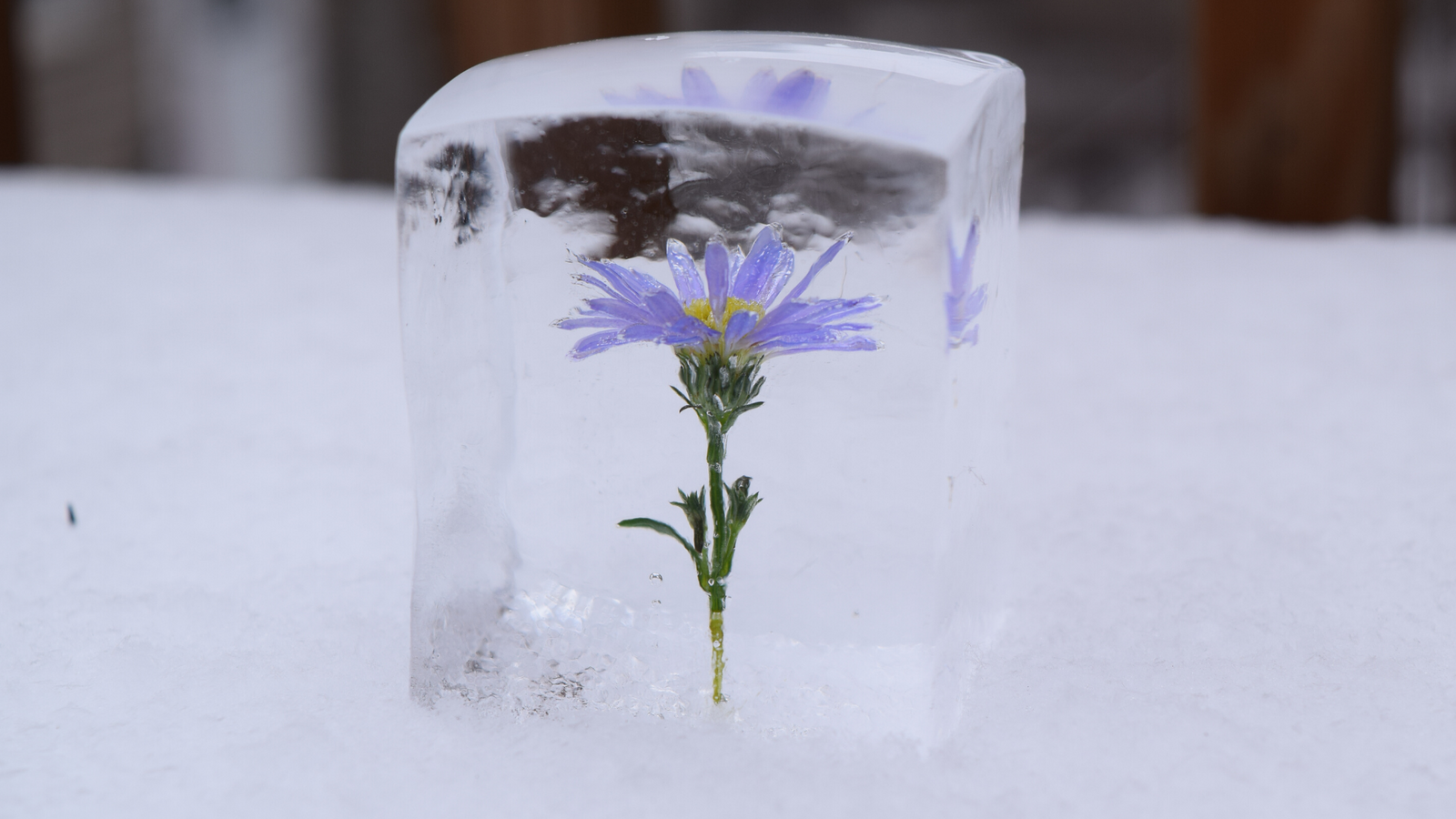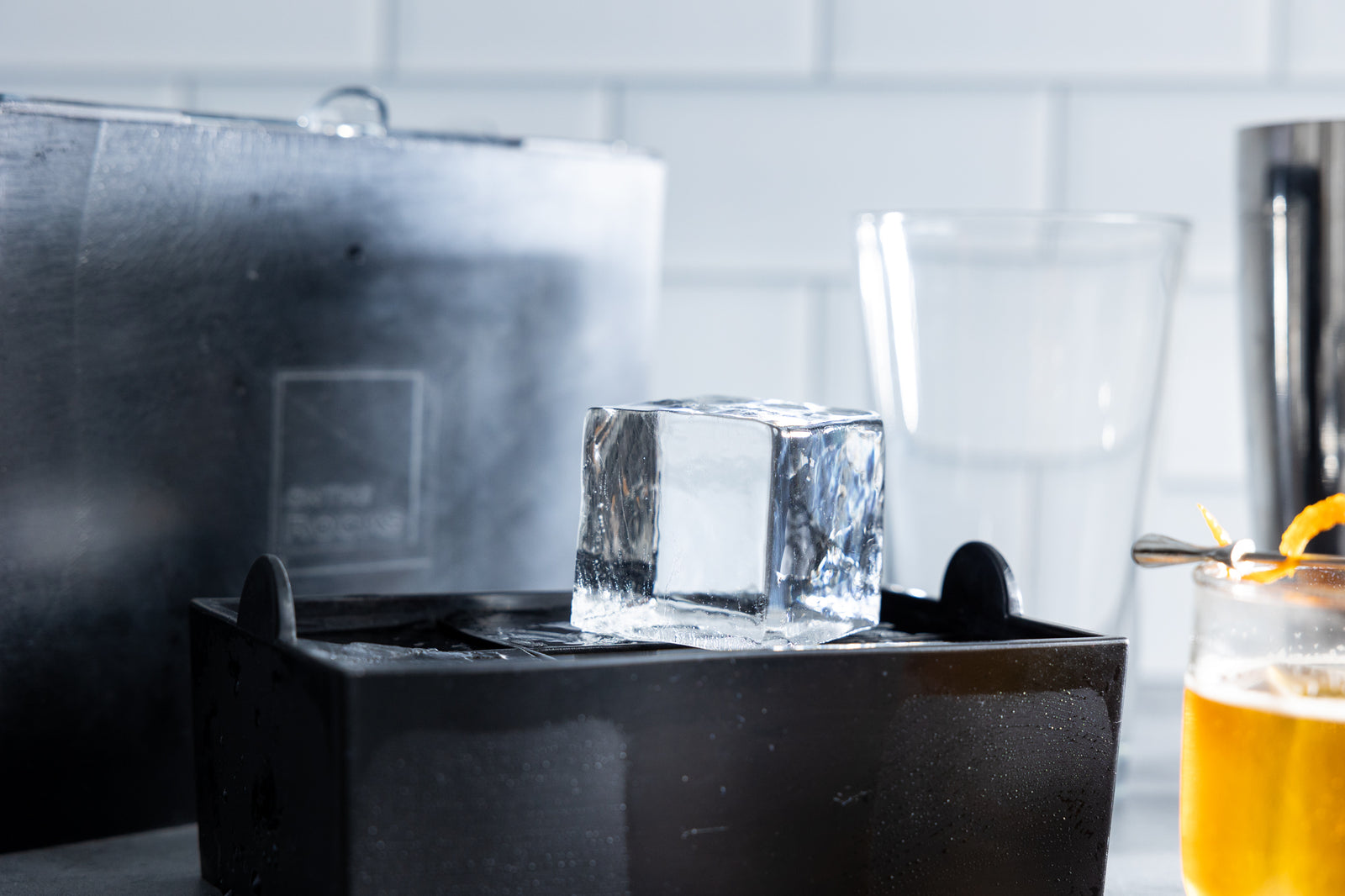The Physics of Ice
Let's talk about ice.
Frozen water. Simple, right? Well not exactly. Freezing is the process of transforming from a liquid to a solid, whether it’s something like water that we normally think of as a liquid or Aluminum at 1,221°F (660.3°C), it doesn’t matter; Freezing is freezing. As the temperature of any material drops to the freezing point the atoms/molecules begin to slow down and stick to one another in what’s known as a crystal lattice. Water ice actually has 18 different crystal structures...but more on that later. The conditions under which freezing happens (like pressure, rate of cooling, contamination, etc.) affect which of the 18 different crystal structures are formed.
More simply put...
As water approaches the freezing point the molecules of water begin to stack up like lego blocks into a tower, but based on the instructions you have, there are a lot of different kinds and colors of towers that might be built.When we think of water we think H2O. Pure. Simple. Not the case. There are 3 major factors keeping us from making a perfect crystal structure, i.e. a beautiful tower of transparent, 3x2 lego blocks.
- First off the water we drink isn’t all the same size lego blocks. It has random little single blocks in along with the 3x2 blocks. That sorta messes up how our H2O molecules can come together.
- In addition to that we have gas molecules, like Nitrogen and Oxygen, mixed into the water too...also trying to eff up our beautiful, uniform tower of lego blocks.
- Finally H2O is weird. I mean that in the best possible way, I love weirdos. I mean water is the basis for all life that we know of, but it’s one of the only substances that expands as it freezes. The implications of that are huge and not just for the potholes Pittsburgh is known for (footnote: Pittsburgh freezes and thaws more times than almost any other city on the planet.) That means that as water cools from a comfortable 70degF room temperature towards it’s freezing point of 32degF (0degC) it gets smaller and smaller, the molecules get closer and closer together. Then when it hits 39.16degF (3.98degC) , still completely liquid something strange happens. The molecules start to get further apart (i.e. the volume increases). This is because of what’s known as hydrogen bonding. Basically that means that H2O is a very polar molecule, kind of like a magnet. Each molecule of H2O simultaneously attracts and repels other molecules of H2O depending on how they’re oriented. When the temperature is high the molecules are moving around so fast and so randomly oriented that the natural magnetism of the H2O molecules is an insignificant force. However, as the temperature drops, the force becomes more and more important; the H2O molecules begin to move more slowly, and the hydrogen bonding (waters natural magnetism) begins to take effect. There comes a point, 39.16degF (3.98degC), when the energy of random movement of the water molecules (think of it as temperature) perfectly balances the hydrogen bonding of the molecules themselves (their pseudo magnetism) and they come to a happy medium dancing around one another like a tightly packed dance floor full of slow dancers, but as the temperature continues to drop, the music slows to a complete stop, the couples start to wonder why they’re standing so close to so many other couples, and their innate desire for space (hydrogen bonding) causes them to spread out and overcome the now extremely weak kinetic energy (temperature).
- This is a drastic oversimplification, and we’re learning more and more all the time. There are actually 18 different known crystal structures of ice, with the most recent one discovered in 2014 inside a tiny cavity at the center of a diamond where the pressure was over 10,000 times that of normal atmospheric pressure. If this has piqued your interest, and you want to know more, Wikipedia has a great article all about ice.
Okay, complicated...
You get it, but what does all this mean for why ice isn’t clear? And how with all these barriers could we ever possibly get clear ice. Well I’m glad you asked. Let’s start with biomimicry, aka when human beings look to nature and it’s natural phenomena in order to design devices or machines better. In nature ice comes in all shapes, sizes, and colors: snow, hail, icebergs, glaciers, lakes, icicles...there we go. That was where I first noticed how strikingly beautiful clear ice could be. On abnormally large icicle.

In noticing how icicles freeze, I realized they always formed where water was still flowing, and that icicles grew bit by bit, layer by layer. This is actually how nearly all commercial clear ice makers work. They circulate water over a cold surface slowly allowing the water to freeze layer by layer. But this explanation always irritated me. It doesn’t explain why each layer freezes clearly. So let’s look for another example of clear ice in nature, and it’s one that I didn’t realize for a long time: lakes. It’s really funny why I realized this. I was a kid visiting Lake Chautauqua’s Winter Festival. They would cut huge blocks of ice out of the lake and build a giant ice castle, adorned with ice sculptures, all made from blocks of ice cut from what looked like a snowy lake. It’s amazing to think that mechanical refrigeration capable of freezing water was first demonstrated in 1842, but the first freezer didn’t reach homes until 1911. Even then it wasn’t until the 1930s and ‘40s that freezers reached the average home in the US. That means that within the memory of parents and grandparents lies an ice box. A refrigerated box that was kept cool by blocks of ice cut out of lakes. That means that from the birth of the cocktail in the 1800s to the development of the classic cocktails we know it today during the 1920s, the ice those drinks were designed to use, were frozen blocks of lake water.
Okay, you get it...
Clear ice used in cocktails came from lakes, but how does that help us understand why some ice is clear and some is cloudy without the bullshit explanation of it freezing in layers...well it’s because as water begins to freeze only a tiny fraction of the total volume of water is freezing, just the water at the surface of the lake. As these H2O molecules begin to stack up, they are able to push out stray 1x1 lego blocks, the dissolved gasses and minerals, into the vast amount of still liquid water below the surface. As this layer of ice at the surface gets thicker and thicker the concentration of dissolved gasses and minerals in the liquid water below the surface doesn’t change all that much. It’s like saying crying in the ocean would affect how salty the seawater is. Plus in the real world there is still fresh water flowing into and out of most lakes even while they’re frozen several feet thick.
That means that water, in the right circumstances, actually purifies itself as it freezes! Personally I find this to be a truly fascinating miracle of nature...but then again, as stated above, I’m one of those weirdos. However, this is not the case for the ice molds that you fill up and put in your freezer. These molds lose heat and cool down pretty uniformly from all sides, not just the top like a lake. That means they start freezing perfectly clearly, but they’re pushing their impurities (dissolved minerals and gasses) into the center of the mold. The water can continue freezing clearly, pushing out the impurities up to a certain point.
Then the concentration of impurities in the liquid portion of the water is so great that there is no room for more impurities to enter the liquid water, but they have to go somewhere so what happens? Well the dissolved gas molecules all group up and says, “this party is way to crowded for me, let’s get outta here” so they clump up and turn into a bubble and try to leave...except they’re surrounded by a prison of solid clear ice and now they can’t go back into the party (liquid water). The dissolved minerals do the same thing, except when they group up, they become solid flakes of whitish (hopefully) powder...also trapped in their clear ice prison. All the while as the walls of the party start shrinking inward like a trash compactor, and no one can leave the party the pressure starts to rise...the larger the party (mold you’re trying to freeze), the more people are stuck in there, and the more the pressure builds. If the party was big enough to start, the clear ice prison isn’t strong enough to hold everyone in and so they break through! This is why those cheap ice ball molds end up coming out looking more like cloudy eggs than perfect spheres of glass. It’s also why even if you use perfectly pure water, large ice molds still won’t freeze perfectly clear because all the microcracks from the building pressure disrupt the light trying to get through the ice and give it the impression of being cloudy.
Also in News






